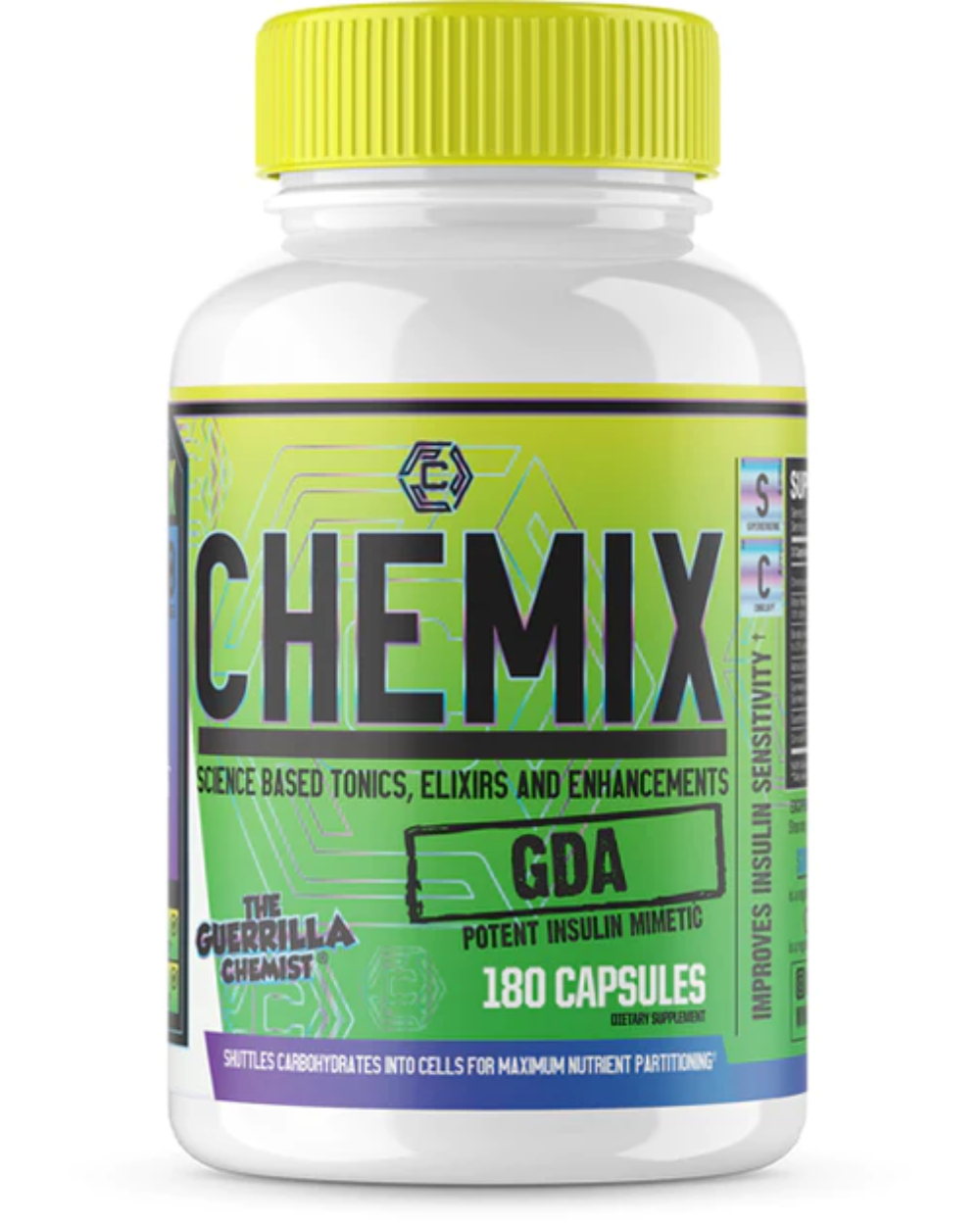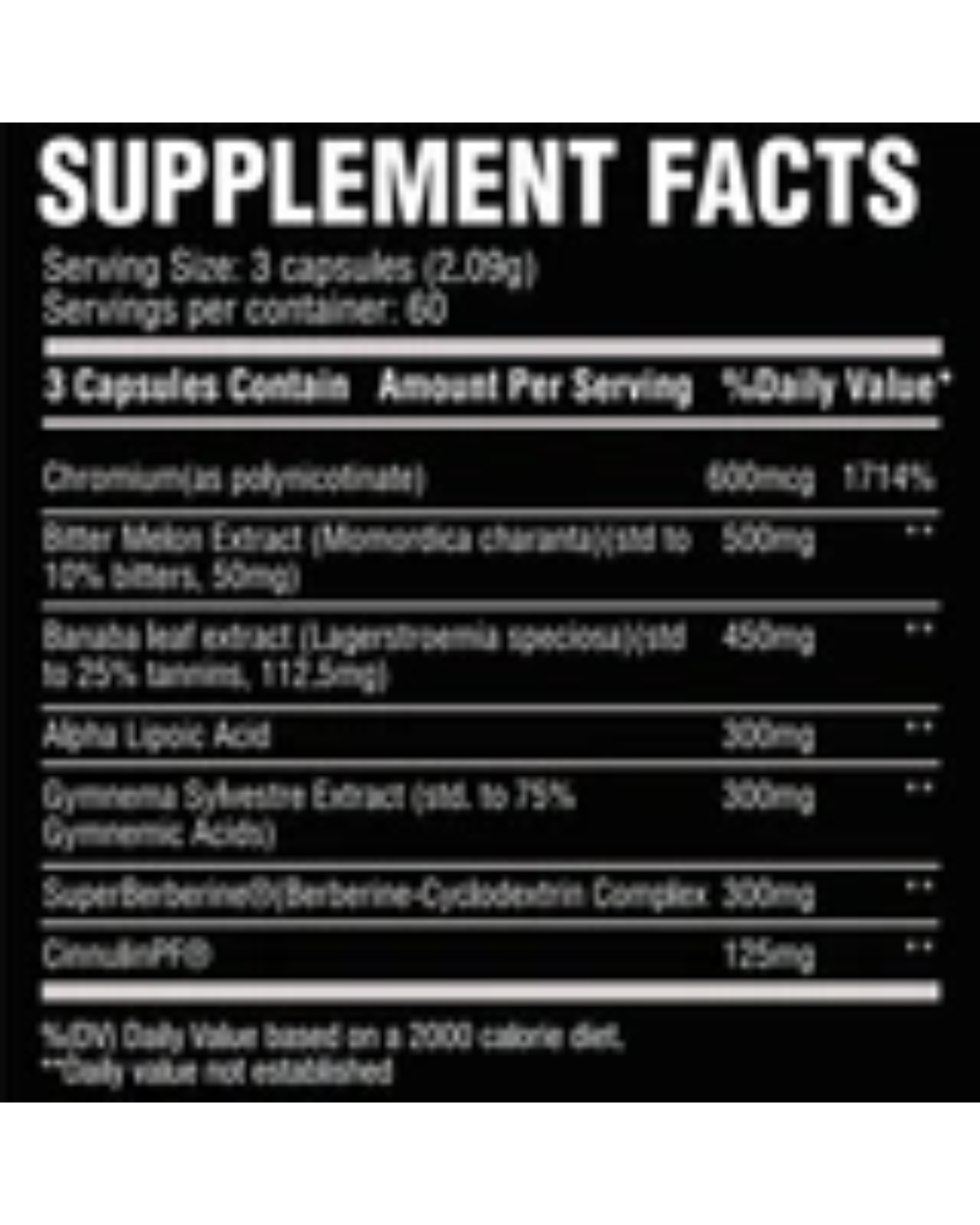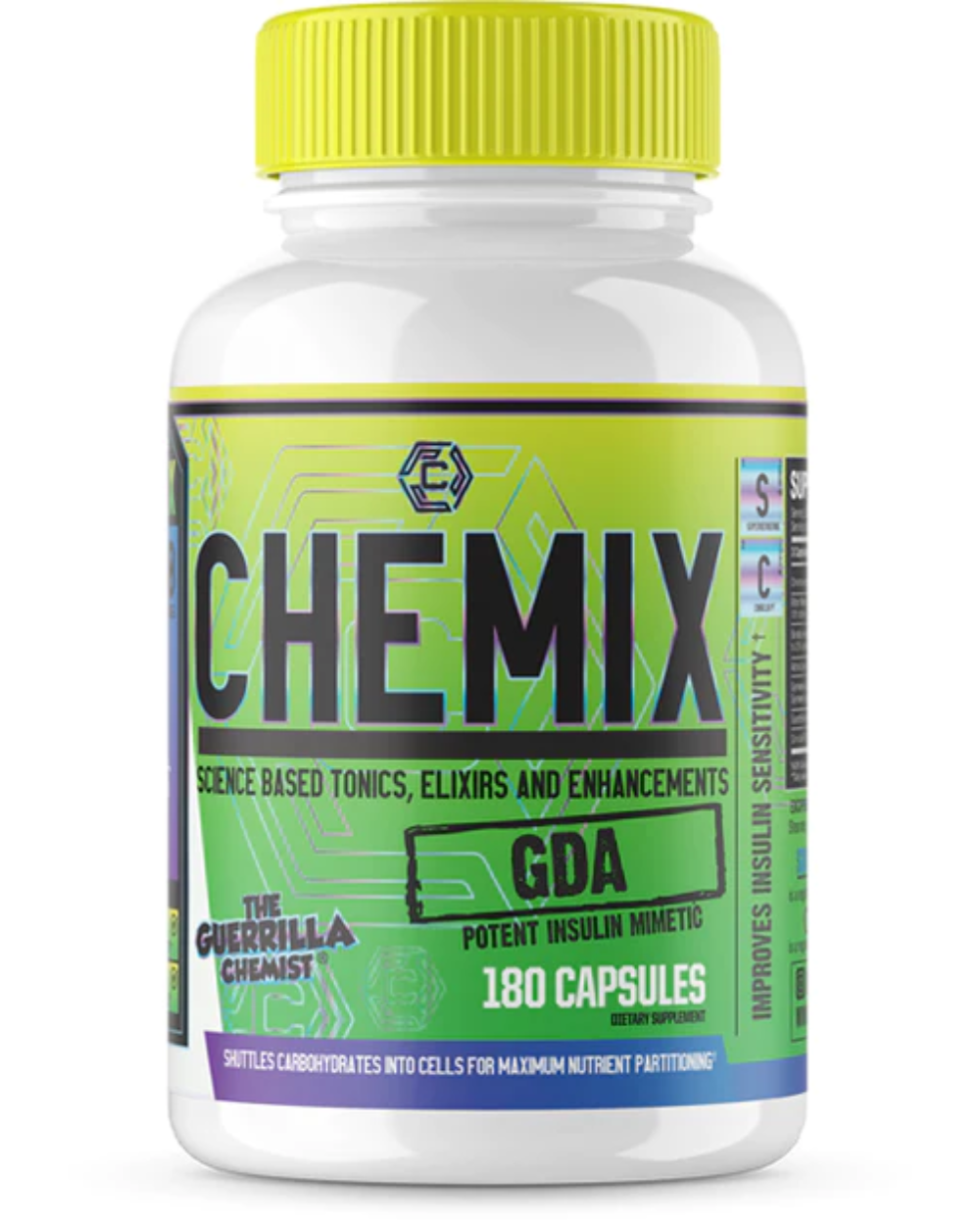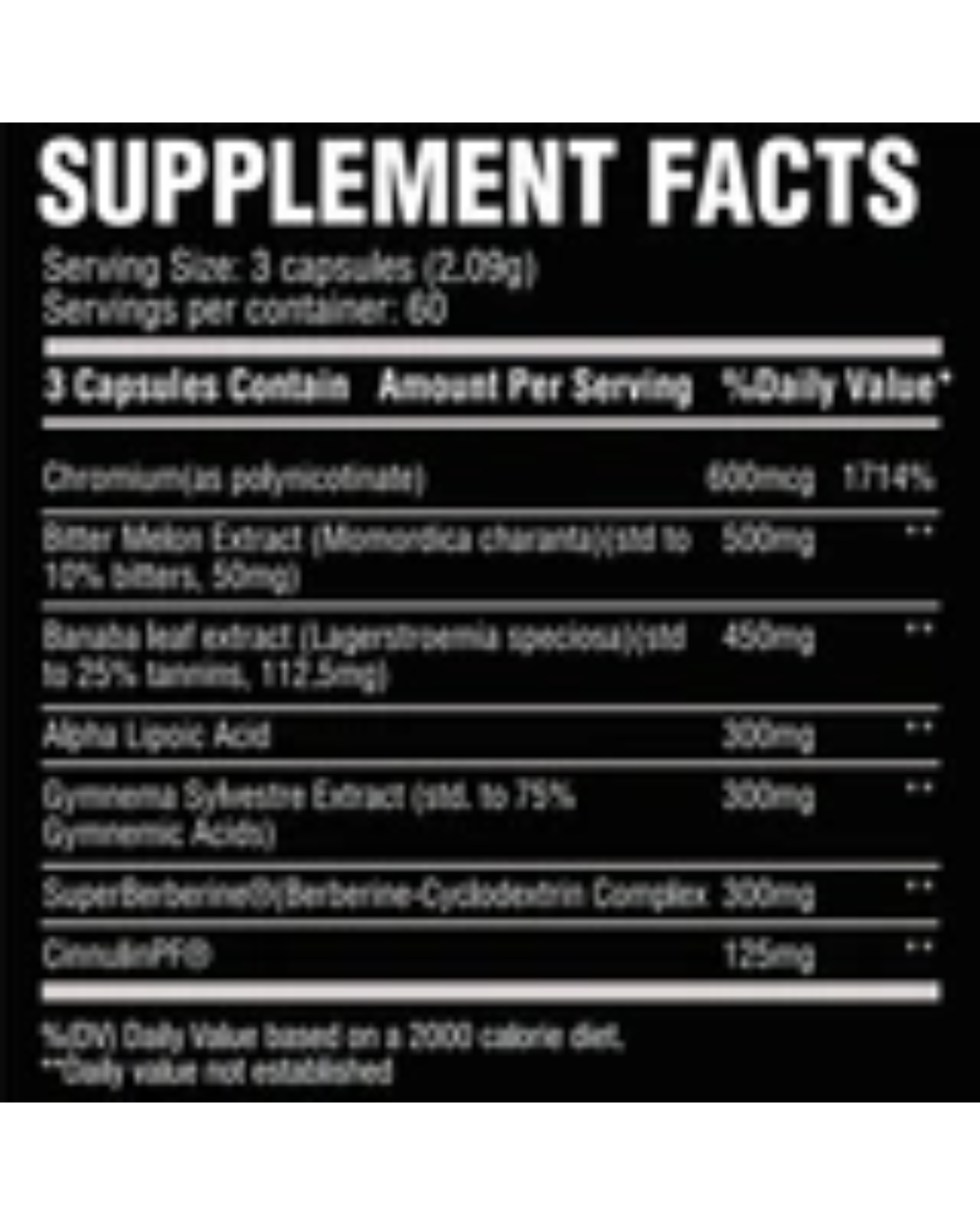Chemix
Chemix GDA
Chemix GDA
Couldn't load pickup availability
Chemix GDA is an ultra-premium Glucose Disposal Agent designed to improve insulin sensitivity, shuttles carbohydrates into your cells for maximum nutrient partitioning, aids in maintaining healthy glucose levels, and increases glycogen storage to unseen levels.
The advanced formula combines research-backed ingredients at clinical and efficacious doses to provide the most potent insulin mimetic available on the market today.
Here is a complete breakdown for this extremely powerful formula:
Chemix® GDA is a premium, multi-faceted glucose disposal agent product designed to help increase carbohydrate assimilation and metabolism, insulin sensitivity, and maintain healthy blood glucose levels. GDA allows your body to utilize the hormone insulin more efficiently, which can lead to gains in lean mass via increased glucose and amino acid uptake into your cells!
Whether you’re trying to gain 10lbs of muscle or lose 10lbs of fat, one key hormone can make or break your success: insulin. Insulin is a protein made up of 110 amino acids, and is secreted from the beta cells in the pancreas upon the intake of carbohydrates. Being a storage hormone, many consider insulin a double-edged sword. Insulin is the most anabolic hormone in the body as it’s responsible for the uptake of glucose and amino acids to from glycogen and skeletal muscle tissue. Bodybuilders have put on slabs of lean muscle tissue by manipulating insulin, and it’s speculated to be the reason why bodybuilders can compete heavier than ever before. But insulin also has a dark side- it can cause to the body to store large amounts of body fat, as well.
Macronutrients are of the utmost importance when it comes to building muscle and burning fat, however if your body isn’t utilizing them properly and efficiently you will fail at both. Inefficient nutrient partitioning normally results from the body not using insulin effectively. Here are some of the actions for which insulin is responsible:
The following is a mini crash course in how insulin works in the body:
All dietary carbohydrates are broken down into the monomer glucose in the small intestine, which then is absorbed into the bloodstream. Once in the blood, glucose signals the pancreas to secrete insulin. Insulin will then bind to the insulin receptor (IR), where it triggers a series of reactions that ultimately
leads to uptake of glucose and amino acids into the cell, glycogen synthesis, increased muscle protein synthesis, and glucose disposal (glycolysis), usually through the insulin receptor substrate/phosphoinositide 3-kinase (IRS/PI3K) pathway. GLUT4, a transporter needed to allow glucose to enter the cell, is translocated to the cell membrane via activation of the IR, and IRS pathway. Different pathways lead to different actions elicited by insulin, and herein lies how one can maximize the use of endogenous insulin to increase lean body mass or lose body fat.
Bitter Melon Extract(standardized to 10% bitters): Known as "vegetable insulin,” bitter melon is used to treat diabetes in many parts of the world, and in some places it’s the only form of treatment. Bitter melon contains a variety of hypoglycemic herbs such as triterpenes, anthroquinones, and glucosinolates. The 3 most profound ones are charantin, polypeptide-p, and vicine. Studies have shown extracts from bitter melon to stimulate insulin release, increase skeletal muscle glucose uptake and utilization, suppress gluconeogenic enzymes, and preserve and regenerate beta cells(the cells that release insulin in the pancreas). There is even research on these compounds activating AMPK and PPARx, both of which help regulate energy expenditure in the body.
Banaba leaf Extract(standardized to 25% tannins): Lagerstromemin speciosa , commonly known as banaba leaf, contains many compounds that can naturally help with blood sugar control. Most people assume it’s the work of corsolic acid, for which most banaba supps are standardized. However, it’s actually the gallotannins that are responsible the most for insulin memetic function. Specifically, Penta- O-galloyl-glucopyranose(PGG) was determined to have the strongest effect of the group. PGG was shown to significantly increase glucose transport into cells, both in vitro and in vivo. It also was shown to have an anti-adipogenic(inhibit fat cell production) effect, which many other glucose disposal agents do not possess(remember, insulin is adipogenic). Lagerstromemin was also identified to activate the insulin
receptor(IR), one mechanism for lowering blood glucose. One of the other major mechanisms of action for banaba leaf is increasing expression and activation of GLUT-4, the transporter protein that allows glucose to be absorbed into cells. Interestingly, removing tannins from banaba extract eliminated all glucose transport activity(GLUT4), which also suggests that the tannins, not corsolic acid is responsible for the anti-diabetic effects. Another study showed that Lagerstromemin was about 54% as strong as insulin for glucose transport activity, which is pretty remarkable.
Alpha Lipoic Acid(yielding 150mg of R-ALA): Alpha Lipoic acid is a mitochondrial fatty acid with really interesting properties. It's been extensively studied for a multitude of benefits, but perhaps the most applicable are its use as an anti-oxidant and a tool to manage blood glucose levels and increase insulin sensitivity. ALA has been shown to reduce general biomarkers for oxidation, inflammatory cytosine and lipid peroxidation(generation of free radicals that can damage your cells). In a meta-analysis, ALA was shown to have a remarkable effect on blood glucose levels. It can increase expression of GLUT-4, the transport protein than shuttles glucose into your cells. It can also decrease the activity of phosphotyrosine phosphatase 1B(PTP1B), a negative regulator insulin response, as well as potentiating the insulin receptor substrate-1. All of these mechanisms can result in more carbohydrates going into your muscles instead of being stored as fat. R-ALA is one of the most important ingredients in GDA and works synergistically with the other ingredients to reduce blood glucose levels and increase glucose uptake in muscle cells.
Gymnema Sylvestre Extract(standardized to 75% Gymnemic acids): Gymnema sylvestre(GS) is a natural antidiabetic herb that has been used to treat blood sugar ailments for centuries. GS contains triterpenoid saponins called gymnemic acids that stimulate the release of insulin from the pancreas, as well as increase glucose uptake in cells. GS extract has also been shown to lower LDL and vLDL(bad cholesterol), as well as increase HDL(good cholesterol). In addition, gymnema sylvestre extract has been shown to regenerate islet cells in your pancreas, which allows your body to regulate healthy insulin secretion and function.
Super Berberine®(Berberine-Cyclodextrin complex): Berberine is one of the only supplements that has human data that shows efficacy on par with pharmaceuticals. It's main properties are activation of 5' adenosine monophosphate-activated protein kinase(AMPK), which leads to fatty acid oxidation, inhibition of cholesterol synthesis and lipogenesis, increases in muscle glucose uptake and insulin secretion(amongst other things). Focusing on muscle glucose uptake and insulin secretion, berberine was shown to very effective as a glucose disposal agent in serval studies. Berberine may increase glucose-stimulated insulin secretion and inhibit a-glucosidase activities, as well as promoting glucose uptake in cells. It works by increasing phosphorylation of the insulin receptor, insulin receptor substrate- 1, and protein kinase B. Berberine also inhibits the enzyme PTP1B, an enzyme that down regulates the insulin pathway which can also lead to insulin resistance. The main problem with Berberine is it has terrible bioavailability. Super Berberine is Berberine encased in beta-cyclodextrin, which has been shown to increase solubility by over double of free berberine in a simulated gastric environment. Super Berberine also contains sodium caprate, a fatty acid that increases diffusion of berberine through the epithelial cells in the intestine.
Cinnulin PF®: Cinnulin PF® is a patented version of a 20:1 extract of Cinnamomum burmanni that contains high levels of water soluble double-linked procyanidin type-A polymers of flavanoids. Research shows that these polymers can increase autophosphorlyation of the insulin receptor-ß, insulin receptor substrate-1, and phosphatidylinositol 3-kinase, all of which activates the receptors and increases the ability for insulin to bind, as well as inhibits the enzyme phosphotyrosine phosphatase(PTP1B), which dephosphorlyates(inactivates) the insulin receptor.
By potentiating the insulin receptor, your body can use less insulin to absorb the same amount of glucose, thus increasing your insulin sensitivity. The polymers in Cinnulin PF® hav ealso been shown to increase GLUT-4 expression, the transporter molecule that brings glucose into cells.
Chromium(III) polynicotinate: Although it has been known that chromium(III) (Cr) has positive effects on blood glucose control, the mechanism by which it does this has not been fully elucidated until
recently. It was shown that insulin binds to the insulin receptor(IR) and then Cr binds in a second binding pocket, which increases IR activity anywhere from 3.5-8 fold, which has a downstream effect on multiple insulin-dependent pathways. Essentially, Chromium allows your body to use insulin more effectively due toits 2 binding sites on the IR. The polyniconinate chelate of Chromium has been found to be more bioavailable than other versions.
Chemix® GDA is a premium insulin memetic formula that combines 7 of the most well-studied and effective ingredients for maximizing the power of the anabolic hormone insulin! These carefully selected ingredients work with different mechanisms to allow your body to increase lean body mass by shuttling more glucose and amino acids into your cells, priming the perfect anabolic environment for growth. GDA can also help lower blood sugar levels, as well as increase insulin sensitivity, which may aid in fat loss!
- The Guerrilla Chemist
References:
Klein G, Kim J, Himmeldirk K, Cao Y, Chen X. Antidiabetes and anti-obesity activity of Lagerstroemia
speciosa. Evidence-Based Complementary and Alternative Medicine. 2007;4(4):401-7. 2. Al-Romaiyan, A., et al. "A novel Gymnema sylvestre extract stimulates insulin secretion from
human islets in vivo and in vitro." Phytotherapy Research 24.9 (2010): 1370-1376.
Vincent, John B. "Quest for the molecular mechanism of chromium action and its relationship to
diabetes." Nutrition reviews 58.3 (2000): 67-72.
Shay, Kate Petersen, et al. "Alpha-lipoic acid as a dietary supplement: molecular mechanisms and therapeutic potential." Biochimica et Biophysica Acta (BBA)-General Subjects 1790.10 (2009): 1149-1160.
Kamenova, Petya. "Improvement of insulin sensitivity in patients with type 2 diabetes mellitus
after oral administration of alpha-lipoic acid." HORMONES-ATHENS- 5.4 (2006): 251.
Joseph, Baby, and D. Jini. "Antidiabetic effects of Momordica charantia (bitter melon) and its
medicinal potency." Asian Pacific Journal of Tropical Disease3.2 (2013): 93-102.
Imparl-Radosevich, Jennifer, et al. "Regulation of PTP-1 and insulin receptor kinase by fractions from cinnamon: implications for cinnamon regulation of insulin signalling." Hormone Research in Paediatrics 50.3 (1998): 177-182.
Yina, Jun, Huili Xing, and Jianping Yeb. "Efficacy of Berberine in Patients with Type 2 Diabetes."
Metabolism 57.5 (2008): 712-717.
Leach, Matthew J. "Gymnema sylvestre for diabetes mellitus: a systematic review." The Journal
of Alternative and Complementary Medicine 13.9 (2007): 977-983.
Akedo, Hitoshi, and Halvor N. Christensen. "Nature of insulin action on amino acid uptake by the
isolated diaphragm." Journal of Biological Chemistry 237.1 (1962): 118-122.
Zhang Y, Cui Y-L, Gao L-N, Jiang H-L. Effects of ß-cyclodextrin on the intestinal absorption of
berberinehydrochloride, a P-glycoprotein substrate. International Journal of Biological Macromolecules. 2013 Aug;59:363–71.
Zhang M, Lv X, Li J, Meng Z, Wang Q, Chang W, et al. Sodium caprate augments the
hypoglycemic effect of berberine via AMPK in inhibiting hepatic gluconeogenesis. Mol Cell Endocrinol. 2012 Nov 5;363(1-2):122–30.
Ziegenfuss, Tim N., et al. "Effects of a water-soluble cinnamon extract on body composition and
features of the metabolic syndrome in pre-diabetic men and women." Journal of the International Society of Sports Nutrition 3.2 (2006): 45. 14. Rachh, P. R., et al. "Antihyperlipidemic activity of Gymenma sylvestre R. Br. leaf extract on rats fed
with high cholesterol diet." Int J Pharmacol 6.2 (2010): 138-141.




